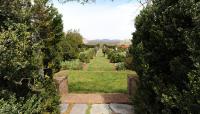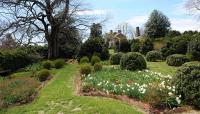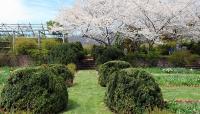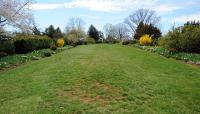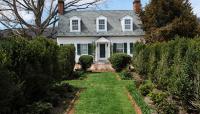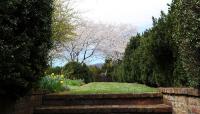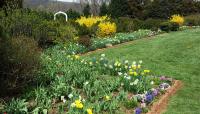Landscape Information
Comprising 2,913 acres of rolling hills and pastureland, this Colonial-era property adjacent to a Monacan Indian settlement was purchased in 1795 by Thomas Jefferson. He managed it as a tenant farm for William Short, U.S. Ambassador and Jefferson’s “adopted son.” Subsequent owners David and Mary Higginbotham commissioned regional architect Martin Thacker to design the Federal-style Main House in 1820 and renamed the property Morven. In 1928, owners Mary and Charles Stone expanded the Main House and hired landscape architect Annette Hoyt Flanders to renovate and extend the formal gardens. Flanders designed a Formal Garden and Cutting Garden, each of which used a diverse mix of shrubs, perennials, and annuals in coordinating shades of purple, blue, pink, white, and yellow. She worked with existing symmetrical beds in the Formal Garden and created alternating rows of perennials and vegetables backed by taller hedges in the Cutting Garden. The garden perimeter was enclosed with a hawthorn hedge mixed with flowering shrubs. Flanders also designed entrance gates, brick walls and paths, and slate benches throughout the garden. Situated on a hilltop, the house and gardens have broad views of the surrounding mountains, accentuated by Flanders’ axial design. A four-acre Japanese garden and house were installed in the 1990s. In 2001, owner John W. Kluge donated the property to the University of Virginia; it is now operated by the University of Virginia Foundation. In 1973, Morven was listed in the National Register of Historic Places.





